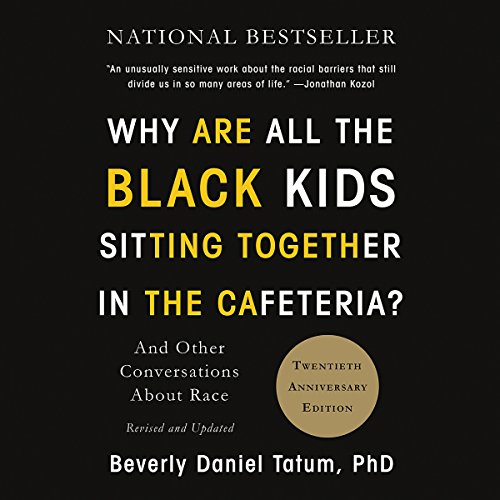Why Are All the Black Kids Sitting Together in the Cafeteria? audiobook
Hi, are you looking for Why Are All the Black Kids Sitting Together in the Cafeteria? audiobook? If yes, you are in the right place! ✅ scroll down to Audio player section bellow, you will find the audio of this book. Right below are top 5 reviews and comments from audiences for this book. Hope you love it!!!.

Review #1
Why Are All the Black Kids Sitting Together in the Cafeteria? audiobook free
It touched on Native Americans, a group so easily forgotten by many. It gave a historical context which made it easier to understand today\’s social issues and it gave the tools talk about those issues and how to work together to keep moving foward. 27 people found this helpful
Review #2
Why Are All the Black Kids Sitting Together in the Cafeteria? audiobook streamming online
Tough to listen to, but the truth is always in season. Learned so very much. well reasoned 18 people found this helpful
Review #3
Audiobook Why Are All the Black Kids Sitting Together in the Cafeteria? by Beverly Daniel Tatum
I had read parts of the original but the twentieth anniversary addition was particularly powerful. Me and my wife are look at fostering and there is a good chance that kids place with us will have a different race than our selves, this book was incredible helpful tool, preparing us to promote a positive racial identity for kids coming into our home irrespective of their race 35 people found this helpful
Review #4
Audio Why Are All the Black Kids Sitting Together in the Cafeteria? narrated by Beverly Daniel Tatum
Written in 1999 and updated in 2017 this book nevertheless feels out of date, not fully integrating the substantial changes and clarity of the last few years. The main thrust of this book is while racism continues to exist, and substantially influence peoples lives, it is healthy to develop a strong racial identity and discuss the issues associated with race with others that share that identity. This is quite reasonable and important to understand. However, this only takes a few paragraphs to discuss, so most of the book is an attempt to demonstrate that racism in the US still exists, and has huge negative consequences. Of the numerous books I have read on this subject, this is in the bottom third by usefulness. For me the most useful has been \”How to be an Antiracist\”. There is a long, statistics laden, section describing many other US ethnic groups and how they differ in social success. There are a lot of statistics to support the existence of substantial continuing racism in the US. Unfortunately these statistics are unnecessary to those who agree, and unconvincing to those who do not. Audio format is also particularly poor at presenting lots of statistics. This book uses one of the definitions of racism that seems to really annoy white people with racist anxiety. That is, US non-whites can\’t be racist because racism is defined by the system of power that supports it. She does this intentionally, knowing it will incense some well meaning white people. She also states that all US white people benefit from racism. Although largely true, this is very likely not completely true. Such definitions and claims make the author appear to be a zealot and not a seeker of truth and reconciliation. In explaining Affirmative Action the author points out there are no quotas, but instead hiring goals, which are necessary for any program to succeed. I would argue that goals are indeed necessary but they need not be, and should not be, hiring percentage goals. Non-hiring goals that make sense might be elimination of discrimination complaints, or survey results indicating candidates felt the hiring system was fair. One could imagine a basketball team whose hiring practices were bias leading to an all black team. After complaints, they implement an affirmative action program to improve the fairness of their hiring practices. Everyone agrees the new system is now quite fair…No decision maker ever knows the race or name of any candidate, only candidate statistics and test results. Nevertheless the team might still end up almost all black, and that should be ok. There is a lot of stuff in this book that is really good to understand, but has been presented elsewhere better such as Stereotype Threat; Implicit Bias; White Rage; Intesectionality; & Aversive Racism. Her prescription for what to do about racism is we need to break the silence about racism. Really? That is the thing we need? See instead \”How to be an Antiracist\” that suggests starting by voting, in every election, awareness of policy issues, then working to develop implementable antiracist policies and get them implemented. Overall this presents some good perspectives that should be considered, but it also demonstrates some narrow focus that may turn off many readers that might otherwise be more open to the ideas. As is usually the case, the author narration is not very good. 13 people found this helpful
Review #5
Free audio Why Are All the Black Kids Sitting Together in the Cafeteria? – in the audio player below
I found this to be a very enlightening, enriching and educational book. As a white person I struggle with what my role is in dismantling systemic racism. This book has iopened my heart and mind to what\’s possible and how I can be a part of it. 37 people found this helpful







